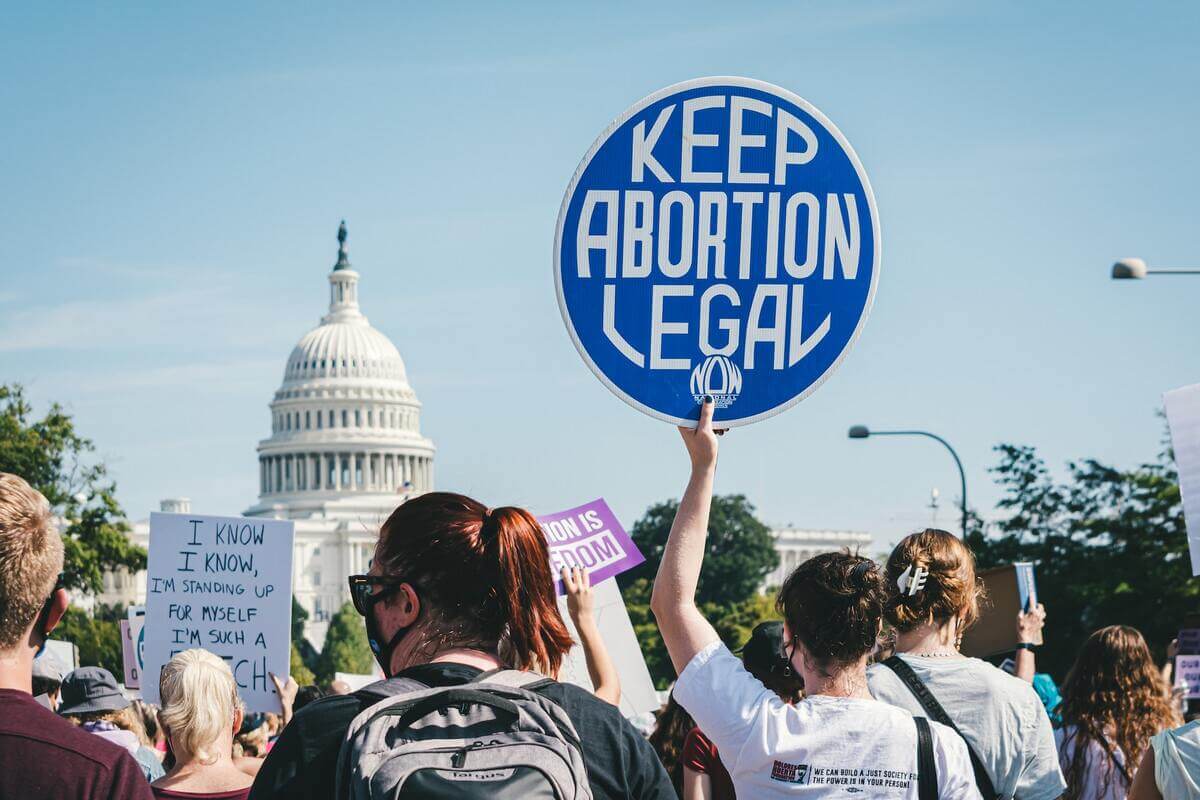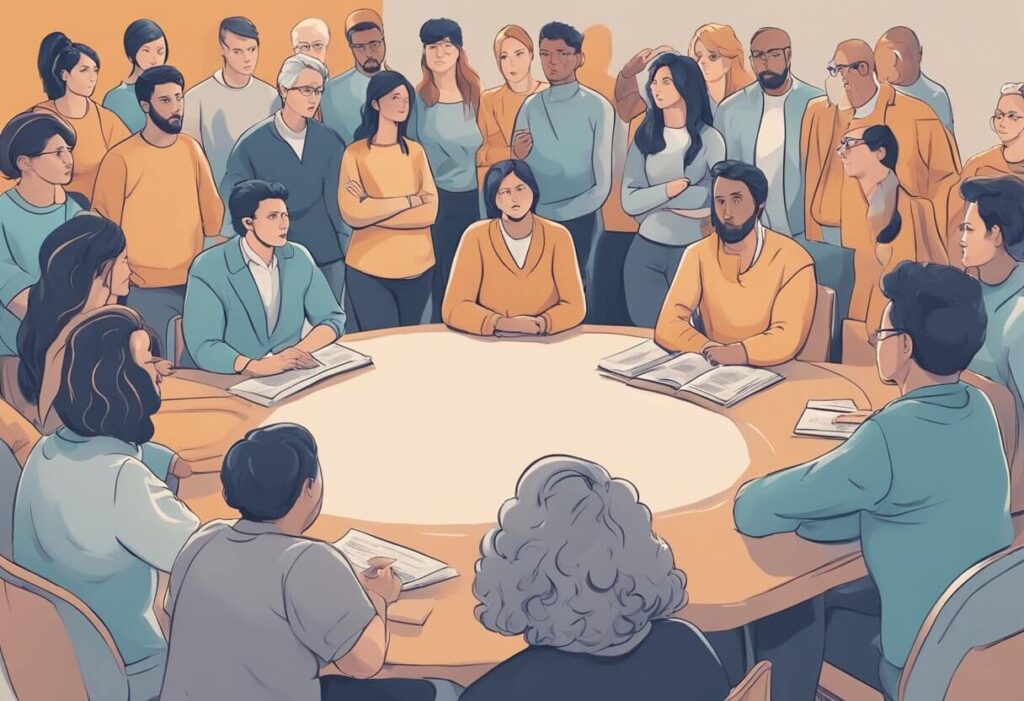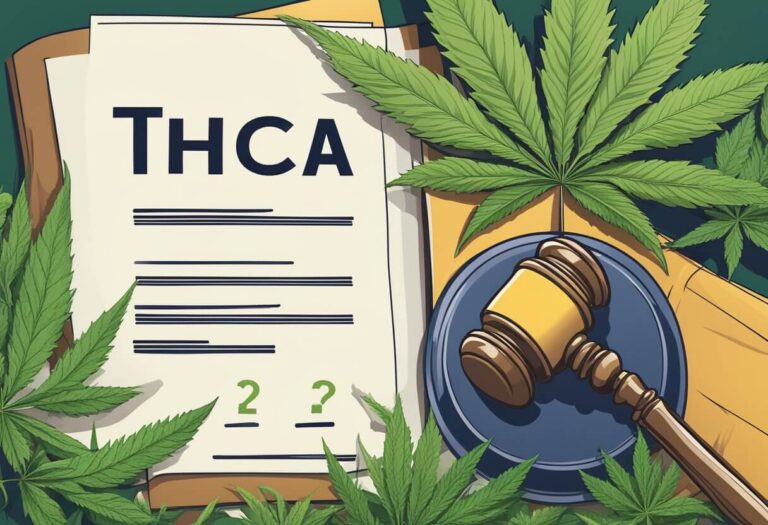Should Abortion Be Legal Essay? Analyzing this Nuanced Issue

The issue of abortion has long been fiercely contested, inciting heated debates full of moral, ethical, practical, and political arguments on both sides. But at its core, one key question drives this discussion: should abortion be legal?
The short answer is yes, abortion should be legal because denying access infringes on women’s fundamental human rights, increases life-threatening dangers from unsafe illegal procedures, and adds unfair burdens to vulnerable communities. However, this hotly debated topic deserves deeper analysis from multiple angles.
In this comprehensive article, we will dive into the complex array of factors to consider regarding the legal status of abortion, including:
- The importance of women’s reproductive rights and autonomy
- The public health implications of access to safe, legal abortion procedures
- The real-life reasons women seek to terminate pregnancies
- The failure of bans in preventing abortions
- The disproportionate impacts on disadvantaged populations
- Addressing common anti-abortion viewpoints
- And more critical perspectives
Gaining a full understanding of this issue in all its nuance is crucial to meaningful discourse and informed policy decisions moving forward. So let’s examine the many complex dynamics shaping this discussion.
Securing Women’s Fundamental Rights and Freedoms
At its core, keeping abortion legal protects women’s basic human rights and personal freedoms. Women deserve full autonomy over their own bodies and lives. Subjecting intensely private reproductive decisions to governmental control is an affront to fundamental liberties.
The Right toDetermine One’s Own Life Path
Banning abortion constitutes government overreach into the most profound types of personal choice. Carrying a pregnancy to term – or not – shapes the entire direction of a woman’s life. Everything from her health, education, career, relationships and economic trajectory hangs in the balance.
Depriving women dominion over this pivotal decision-making violates their self-determination and self-possession in the most intimate sense. Forcing women into compulsory pregnancy and motherhood against their will relegates them to a reproductive servitude that infringes their agency and autonomy.
Privacy Around Medical Options
Moreover, health decisions should remain private discussions between patients and doctors. Once lawmakers start intervening in women’s medical decisions, violating constitutional privacy protections set dangerous precedent.
Today it might determine whether one can access abortion services. But what might it encompass tomorrow? Such normalization of governmental intrusion into individual health matters risks expanding to prohibit additional medical treatments, tests or medicines based on political whim rather than sound science.
For these reasons, keeping abortion accessible respects and protects vital pillars of women’s basic human rights and self-determination over their own lives and bodies. These personal liberties form the backbone of a just, equitable and free democratic society.
The Critical Public Health Impacts of Legal Abortion Access

Casting the debate on legalizing abortion as merely a question of abstract morality or individual liberty overlooks a crucially important dimension – public health.
The policy and legal landscape shaping abortion accessibility has immense concrete repercussions for community health and safety on a societal level. Examining this critical angle more closely makes a compelling case for its legal status.
The Specter of Unsafe Back-Alley Abortions
History provides a chilling vista of what transpires when safe, regulated abortion care gets pushed out of reach. Restrictive policies and laws did not stop women from seeking to end unwanted pregnancies before Roe v. Wade. Instead, it fuelled dangerous “back-alley abortion” underground markets.
These unregulated procedures frequently took place under septic conditions in non-medical settings like motel rooms or private homes. Ghastly implements like coat hangers, bleach and turpentine featured commonly in these traumatic scenes.
Botched terminations by unqualified providers left many women permanently sterile, seriously harmed or even dead. By some 1950s and 1960s estimates, illegal “back-alley” abortions numbered around 1.2 million annually, contributing to as many as 5,000 fatalities each year.
Reducing Maternal Mortality and Morbidity
Conversely, research on modern legalized abortion confirms an unequivocal public health benefit – reduced maternal mortality and pregnancy complications.
Legal abortion is extremely safe, with a death rate of 0.6 per 100,000 procedures – much lower than the 8.8 maternal deaths per 100,000 live births. Where prohibited, those figures balloon sharply. For example, South American countries restricting abortion access suffer maternal mortality rates 14 times higher on average.
Clearly, keeping the procedure lawful, properly regulated and medically accessible prevents grievous harm and saves women’s lives every day. Turning back that clock resurges concrete danger – and death.
Behind the Decision: Real Reasons Women Choose Abortion
Caught in the crosshairs of the ethical debate are the real women facing agonizing decisions in actual pregnancies every day.
Far from careless or selfish choices made in a vacuum, most resolutions to terminate pregnancy stem from complex circumstances and few viable options. Understanding what truly drives these decisions paints a more compassionate picture.
Financial Instability and Insufficient Support
Research on motivating factors shows the most commonly cited reason – financial instability or inadequate social support to raise a child properly.
Over 60% reported lacking the money, good health insurance or necessary partner support structure as key barriers to what they considered properly caring for a baby at that time. Most expressed deep responsibility in only bringing children into healthy, stable environments – which they currently lacked.
Nonelective Health Considerations
Another cohort of abortion patients face recommendations based strictly on urgent health factors, like life-threatening illnesses endangered by continued pregnancy.
Others may receive ominous diagnoses involving severe fetal chromosomal abnormalities or congenital defects vastly reducing chances for survival. In these traumatic cases, terminating pregnancy spares all involved deep future pain and suffering.
The Agony of Rape, Incest and Abuse
Additionally, gut-wrenching circumstances lead some down this path, notably rape, incest and intimate partner abuse survivors conceiving against their will.
For them, carrying and birthing a pregnancy caused by sexual violation agonizingly re-traumatizes victims already enduring profound suffering. Many cannot psychologically bear escalated long-term reminder of the original injury and violation of choice.
Access to abortion offers a desperately needed chance to mitigate destructive added grief and reclaim control over further bodily and life consequences against their consent.
In all these complex situations and more, real life constraints and context guide women toward this solution generally seen as last resort. Dismissing their decisions as irresponsible or immoral fails comprehending their actual lived reality.
Banning Abortion Doesn’t Stop Abortion
A common misconception underpins much opposition to legalized abortion – that outlawing it will significantly reduce occurrence. But an abundance of evidence dismantles this flawed notion.
In reality, its legal status shows little correlation to total procedural numbers. The constant? Desperate women navigating impossible circumstances they alone can judge, with or without state permission.
No Difference in National Abortion Rates
Consider statistics tracking national abortion rates globally. Countries with strictest prohibitions show zero measurable difference compared to those where lawful.
For example, South America completely bans abortion, yet still sees a higher incidence rate than Western Europe, where abortion access remains entirely legal and open.
Clearly, legal frameworks fail creating meaningful deterrent effects. Dire situations beget dire solutions regardless the law.
The Shift to Dangerous Illegal Attempts
That said, while outlawing abortion hardly decreases its occurrence, it does guarantee one tangible result – endangering vulnerable women’s lives by pushing them towards hazardous illegal options.
Studies confirm that in countries banning the practice, patients simply seek dangerous underground alternatives, costing many their health, fertility or lives. Without access to proper medical care, they face exponentially heightened threats trying to terminate pregnancy with no safe options.
Meanwhile in jurisdictions where lawful and regulated, major complications and mortality drop drastically thanks to clinical standards, physician oversight and follow up care.
So while prohibiting abortion fails to meaningfully curb its frequency, evidence clearly shows it succeeds making the process vastly more life-threatening for women caught in undesirable pregnancies.
Unequal Impacts Further Marginalize Disadvantaged Groups
Alongside jeopardizing women’s wellbeing overall, abortion laws banning the procedure also disproportionately target specific marginalized demographics. Restrictive policies tend to negatively impact minority, low-income and young women most acutely.
Racial, Economic and Social Disparities
While advancing arguments about universal women’s or fetal rights, anti-abortion laws sharply contradict themselves through unequal damage inflicted on already disadvantaged groups.
For example, even after Roe v. Wade, low-income women suffer higher rates of unwanted teen pregnancies, maternal deaths and abortion-denial related struggles.
Likewise economically privileged women possessing means and mobility still terminate similar proportions of pregnancies. Except they safely travel elsewhere without criminal liability.
Unfortunately, marginalized women rarely enjoy such options. Limited resources to overcome legal barriers translates into life-altering lost education, jobs, financial stability, marriage prospects, and wellness over the long-term.
Meanwhile the affluent write a check and catch a flight, avoiding comparable sacrifices. This entrenches wider inequality that disproportionately punishes vulnerable populations and worsens chronic inequities built into the system against them.
Teens Suffer Severely Restrictive Fallout
Teen girls especially endure intensely damaging repercussions, socially, economically and health-wise from lack of reproductive choice and abortion services access where unlawful.
With adolescent bodies still developing, compulsory pregnancy risks permanent complications like fistulas, eclampsia and death at a greatly elevated level compared to mature women. For those surviving birthing trauma, few possess means for adequate medical follow up or self care in subsequent years.
Nor can most teenage mothers complete an education, attain financial independence or realize broader life potential when forcibly derailed by compulsory motherhood against their readiness or consent. The poverty cycle worsens.
While the well-off circumvent restrictive laws, minorities and vulnerable women cannot. They unjustly endure amplified long-term hardship from the same prohibitive policies. This deepens entrenched barriers systemically marginalizing them.
Arguments For Abortion Bans Don’t Withstand Scrutiny

While this analysis aims highlighting abortion law complexities beyond definitive good/bad labels, examining common arguments against legal access remains worthwhile context.
Upon closer inspection, reasoning underpinning prohibitive stances appears frequently grounded more by emotion than evidence, proving intellectually and ethically problematic.
Rights of the Unborn? Legal and Scientific Consensus Says No
A main pillar of anti-abortion rationale asserts the absolute right to life and moral personhood of the unborn fetus – often from the moment of conception.
Yet legally, medically and scientifically this notion leaves much ambiguity. Laws do not equate embryos/fetuses with legal people nor bestow equivalent protections accordingly.
Likewise doctors can distinguish developmental biological differences between initial zygotic cellular masses versus complex conscious 30 week preemies on the cusp of thriving ex utero.
Embryology itself recognizes layered intrauterine stages with mounting organic system sophistication until converging more wholly with understood living attributes.
So while sensitive feelings get projected onto amorphous embryonic beginnings, most experts hesitate universal definitive declarations on their precise moral weight or legal rights.
Mental Health Outcomes Dispute Trauma Claims
Other arguments put forth cite inevitable traumatic depression, regret and suicidality tied to procuring abortions, claiming legal prohibition protects vulnerable women accordingly.
However public health investigations dispute notion of blanket causality here. Most studies conversely correlate denial of wanted pregnancy termination, not the abortion choice itself, with escalated anxiety, lowered self-esteem and worsened mental health, especially over the longer-term.
Meanwhile women reports commonly cite great relief and happiness regarding their outcomes when affordable access enables acting on intentional decision-making around planned reproduction goals.
This aligns with data showing countries with free open abortion policies boast the planet’s lowest maternal mental illness and postpartum depression rates.
So again, while anti-choice rhetoric pushes a narrative of trauma and dysfunction resulting from freely chosen terminations, research evidence documents the opposite – legal empowerment enabling family planning largely promotes women’s mental wellness.
The Bottom Lines
As seen above, diverse complex considerations shape the abortion debate, demanding compassionate nuanced dialogue in search of solutions upholding human rights equitably.
Though polarizing public rhetoric fuels misconceptions, research paints a fuller picture revealing measured, evidence-based policy approaches necessary to grapple with this intricate issue compassionately and justly.
Access to legal abortion constitutes only one piece of this puzzle alongside preventing the inequities and barriers driving unwanted pregnancies in the first place – things like healthcare access, domestic violence, lack of sex education or contraception availability.
Only by confronting the full scope of interconnected social, medical and economic factors allowing unintended pregnancies can society identify meaningful change.
Progress moves us beyond judgment toward empowerment affirming women’s dignity in all reproductive experiences while minimizing occurrences of this and other traumatic life disruption against their consent. The path ahead remains complex but not impossible with open minds and hearts seeking liberation for all.






